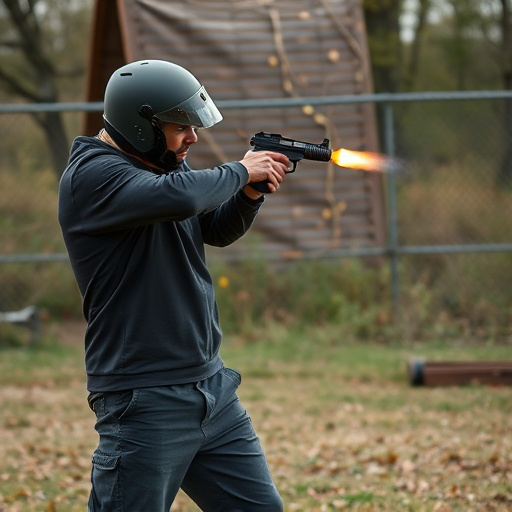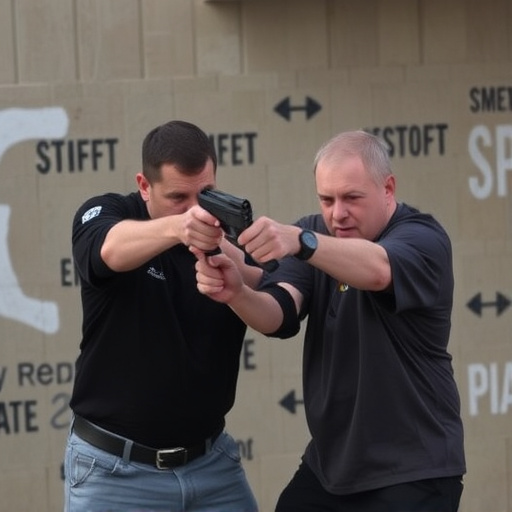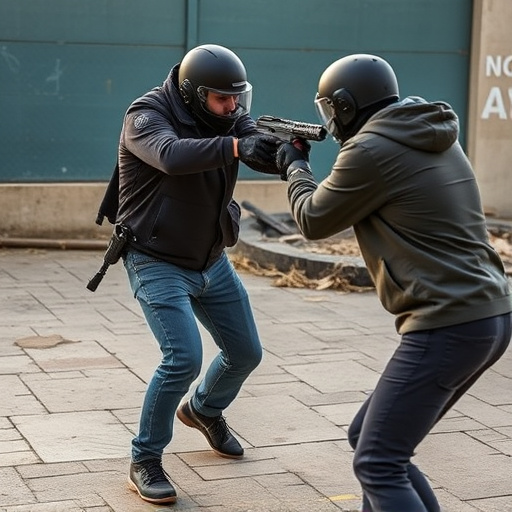For beginners seeking personal defense tools, stun guns with integrated safety mechanisms offer a reliable and effective solution. These devices temporarily incapacitate attackers without causing severe harm, featuring user-friendly designs with adjustable stun intensity levels, automatic shut-off functions, and trigger locks. Additionally, many modern stun guns include LED flashlights for multi-purpose utility, enhancing protection during nighttime activities. Prioritizing stun guns with these safety features is crucial for optimal self-defense strategy.
“Uncover the distinct worlds of Tasers and Stun Guns—two non-lethal force tools that have gained popularity for personal protection. This article offers a detailed exploration, ‘Understanding Tasers and Stun Guns,’ delving into their unique functionalities, safety aspects, and legal implications.
We then highlight ‘Key Differences’ between these devices, providing insights for users. For beginners considering stun guns, our guide emphasizes the importance of ‘Stun Guns with Safety Features,’ offering a comprehensive overview to ensure informed decisions.”
- Understanding Tasers and Stun Guns: A Comprehensive Overview
- Key Differences: Functionality, Safety Features, and Legal Considerations
- Choosing the Right Tool: Stun Guns with Safety Features for Beginners
Understanding Tasers and Stun Guns: A Comprehensive Overview

Tasers and stun guns are both non-lethal weapons designed to incapacitate individuals, but they operate on different principles and have distinct features. Understanding these differences is crucial for anyone considering carrying a personal defense device, especially beginners who prioritize safety.
A taser, officially known as a conducted electrical weapon (CEW), uses two thin probes connected by wires to deliver an electric shock. When activated, the probes launch and attach to the target, administering a high-voltage, low-current pulse that disrupts muscle control, causing temporary paralysis. Tasers are known for their ability to stop aggressive or dangerous individuals without the risk of permanent injury. On the other hand, stun guns, also called electronic control devices (ECDs), emit a strong electrical charge from a pair of prongs or bars, creating a powerful jolt that can immobilize a target. Stun guns are generally easier to use and carry, with many models featuring safety features like simple activation mechanisms and built-in alarms. For beginners looking for stun guns with safety features, these devices offer a sense of security without the learning curve associated with more complex weapons.
Key Differences: Functionality, Safety Features, and Legal Considerations

Choosing the Right Tool: Stun Guns with Safety Features for Beginners

When it comes to self-defense, selecting the right tool is paramount. For beginners considering stun guns as their primary defense mechanism, prioritizing safety features is essential. Stun guns with safety mechanisms such as trigger locks and automatic shut-off functions offer added protection, ensuring users can deploy the device without accidentally discharging it. These safety features are particularly beneficial for those new to stun guns, as they provide peace of mind and control over their personal safety.
Additionally, many modern stun guns come equipped with LED flashlights, providing a multi-purpose tool that enhances visibility in dark or uncertain situations. This dual functionality not only aids in disorienting potential attackers but also offers an additional layer of safety during nighttime walks or unexpected power outages. Beginners should look for stun guns that incorporate these safety features to ensure their well-being and maximize the effectiveness of their self-defense strategy.
In conclusion, while Tasers and stun guns share a similar purpose, they differ significantly in functionality, safety, and legal aspects. For beginners seeking self-defense options, understanding these differences is key to making an informed choice. Stun guns with built-in safety features are ideal for those new to these devices, ensuring effective protection without accidental discharge risks. By choosing the right tool and prioritizing safety, individuals can better protect themselves in various situations.
